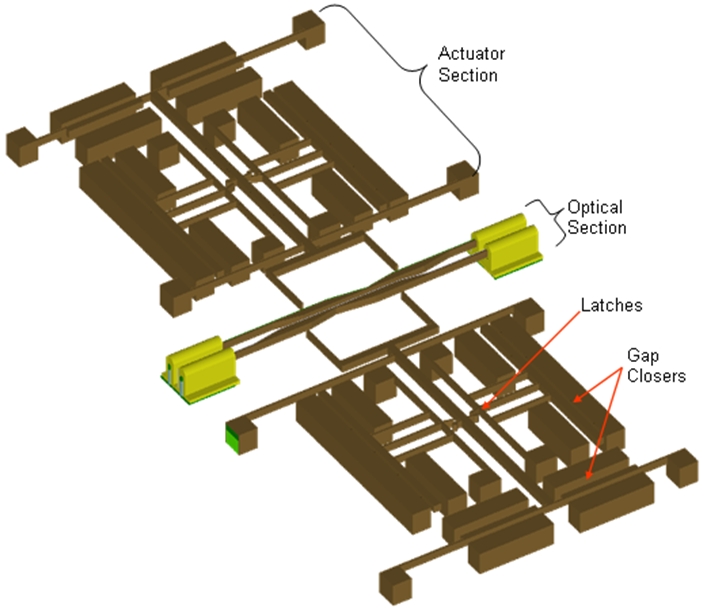Nano-Electro-Mechanical Optical Switch

Schematic of the optical switch
As an alternative to free-space microelectrical mechanical (MEM) optical switches, a set of planar MEM optical switches were designed to reconfigure light paths on the micro- to submicro-second timescales within a smaller device footprint and at a lower anticipated manufacturing (packaging) cost. Moreover, these optical switches were specifically designed to be compatible with a variety of microphotonic substrate platforms, enabling the switch to be monolithically integrated alongside a diverse suite of optical devices. In addition, unlike free-space MEM optical switches, each of the integrated MEM optical switches is able to perform polarization-independent broadband switching, coarse-wavelength-division multiplexing, polarization-splitting, or a combination thereof.
Two well-established technologies were used in the design of these substrate platform-independent optical switches: high-index contrast planar optics and microelectromechanical (MEM) actuation. All of the MEM optical switches were based on evanescent-coupled structures that were modulated mechanically. A flexible fabrication process sequence was devised in order for the MEM optical switches to be digitally actuated without requiring complex and expensive feedback circuitry. Moreover, the MEM optical switches were designed with mechanical latches that effectively made the MEM optical switches bistable-- not requiring a constant external power supply to maintain a switch state. The figure shows an optical switch that uses adiabatic directional coupling to transfer the optical signal from one waveguide to the other, tethers along with gap closers to push the waveguides together to allow the waveguides to interact, and latches along with gap closers to hold the optical switch in the desired optical state.
